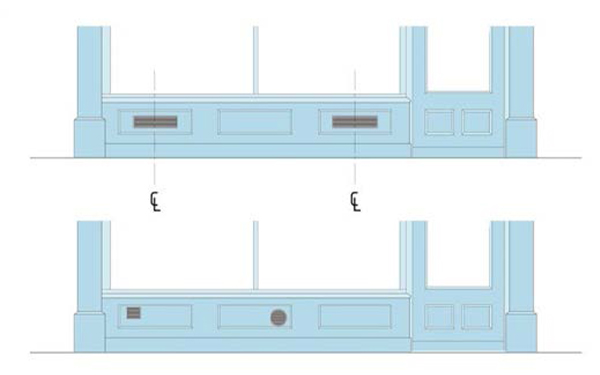4.11. Ventilation
- Like the Victorians concerned about air quality, energy use and communicable diseases, today ventilation should still be considered as an essential part of new shopfronts. Proper ventilation also reduces reliance on air conditioning, improving a shop’s energy efficiency.
- The most practical way of ensuring good natural ventilation and cooling is to include opening transom lights. Examples of opening transom lights can be found on Georgian and Victorian shopfronts with some Victorian shops incorporating ventilation grilles between the transom lights and fascia.
- Other shopwindows include vertical sliding sash sections which, if used properly by opening both sections halfway, providing a very efficient means of ventilating and cooling the room (hot air flows out at the top and cold air in at the bottom). These features often reflect historic use of buildings for sales of perishable goods, including bakers, fishmongers and butchers and are likely to be considered important to the building and area’s historic character.
- Ventilation can also be achieved by incorporating grilles into the panels on the front of stallrisers. Stallriser grilles should be designed in sympathy with the rest of the shopfront elevation and should be sympathetic to symmetry scale, colour, and materials. Grilles and vents should not appear as arbitrarily, retrofitted items. They can, however, be extensive and may be needed to ventilate basements.
- On existing Victorian shopfronts, every effort should be made to restore or reinstate blocked-up ventilation grilles and opening transom lights which are shut fast, as these make an important part of the building’s functioning apparatus.
 A ‘hopper opening’ transom light, Newport
A ‘hopper opening’ transom light, Newport
 A good example of stallriser vent (top). A poor example of vent placement (bottom).
A good example of stallriser vent (top). A poor example of vent placement (bottom).





